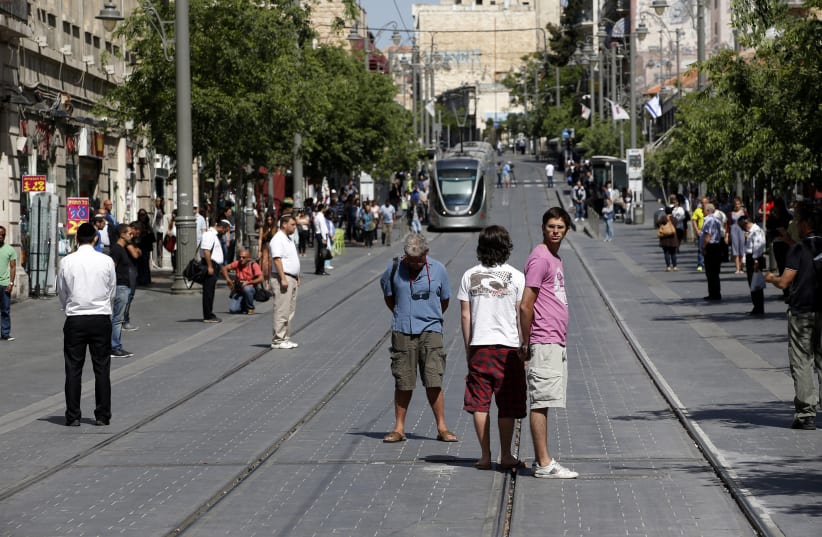On that Tuesday 52 years ago, Jerusalem was liberated. The barbed wire that had cut through downtown east of the post office on Jaffa Road was removed, the Temple Mount and Western Wall were in our hands and Jews were able to walk around the whole city for the first time under Jewish sovereignty in 1,900 years.
Into that heady summer of ’67 fell a cold reality on the ground. We were now a city comprised of two unequal parts – east and west – ruled not by a Jordanian monarchy, the British Mandate or Ottoman Empire but by a democracy, the State of Israel.
“We still talk about east Jerusalem and west Jerusalem as if we were talking about two different cities – but this is not the case,” said President Reuven Rivlin at the state ceremony on Sunday. “There is only one city, one Jerusalem. There is the west and there is the east, but Jerusalem is one, one and the same.”
One and the same? If only that were true.
On Sunday, State Comptroller Joseph Shapira issued a report about the city, to coincide with Jerusalem Day. The wide-ranging review, covering 2007-2016, included recommendations on security, social services, tourism, hygiene and education, among other areas studied.
It is not a pretty report card. It is hard to pick just one item to highlight from the publication, filled as it is with such glaring examples of state and municipal malfeasance.
Tourism, for example, a foundation stone for Jerusalem’s economy, is not getting the necessary resources. People come from all over the world to see this city, a cradle of spirituality, and what are we showing them? A filthy metropolis.
“In prominent tourism areas,” read the report, “piles of garbage and filth, trash bags hanging on the gate, overflowing trash bins and garbage floating in the fountains were found. In addition, large trash containers near the Tower of David and at Mount Zion were open and surrounded by filth.”
This is Israel’s showcase capital? Compared with Washington, London, Paris, Moscow, Tokyo or Riyadh, Jerusalem is an embarrassment.
On security, specifically the outer perimeter fence of the city, Shapira found that “the continuation of holes in the barrier [between Jerusalem and Palestinian areas], which allows the entrance of people crossing the border illegally… endangers the security of Israeli residents generally, and especially Jerusalem residents.”
The fault, said Shapira, was shared by all, a lack of coordination among the police, the Shin Bet (Israel Security Agency), the IDF and the relevant related ministries, and he called out Prime Minister and Defense Minister Benjamin Netanyahu to fix it.
A main section of the report was strongly critical of the treatment of the Arab community living on the city’s eastern side.
State agencies, the comptroller said, are “not even meeting the minimal requirements the law requires” in providing health, sanitation, education and services for children at risk, people with disabilities and the elderly.
Jerusalem’s population has now surpassed 900,000 citizens, of whom Arabs constitute 38% – but receive only one quarter of the city’s social services budget.
Another example to the city’s shame was Shapira’s findings on education. According to the comptroller, 23,000 east Jerusalem schoolchildren ages 3 to 18 were never registered in an educational system recognized by the state. There is no way to know what education, if any, they are receiving – nor is anyone seeking to find out.
Not surprising, then, that around 25% of east Jerusalem high school students drop out, a percentage higher than the national average – and higher than the rate across the Arab sector.
This is doubly mistaken, both because the Arab residents of east Jerusalem deserve basic and equal services, and because such neglect breeds extremism, not a sense of belonging.
Until Israel properly cares for all residents of the capital, both on its eastern and western sides, Jerusalem won’t be the country’s united capital.
